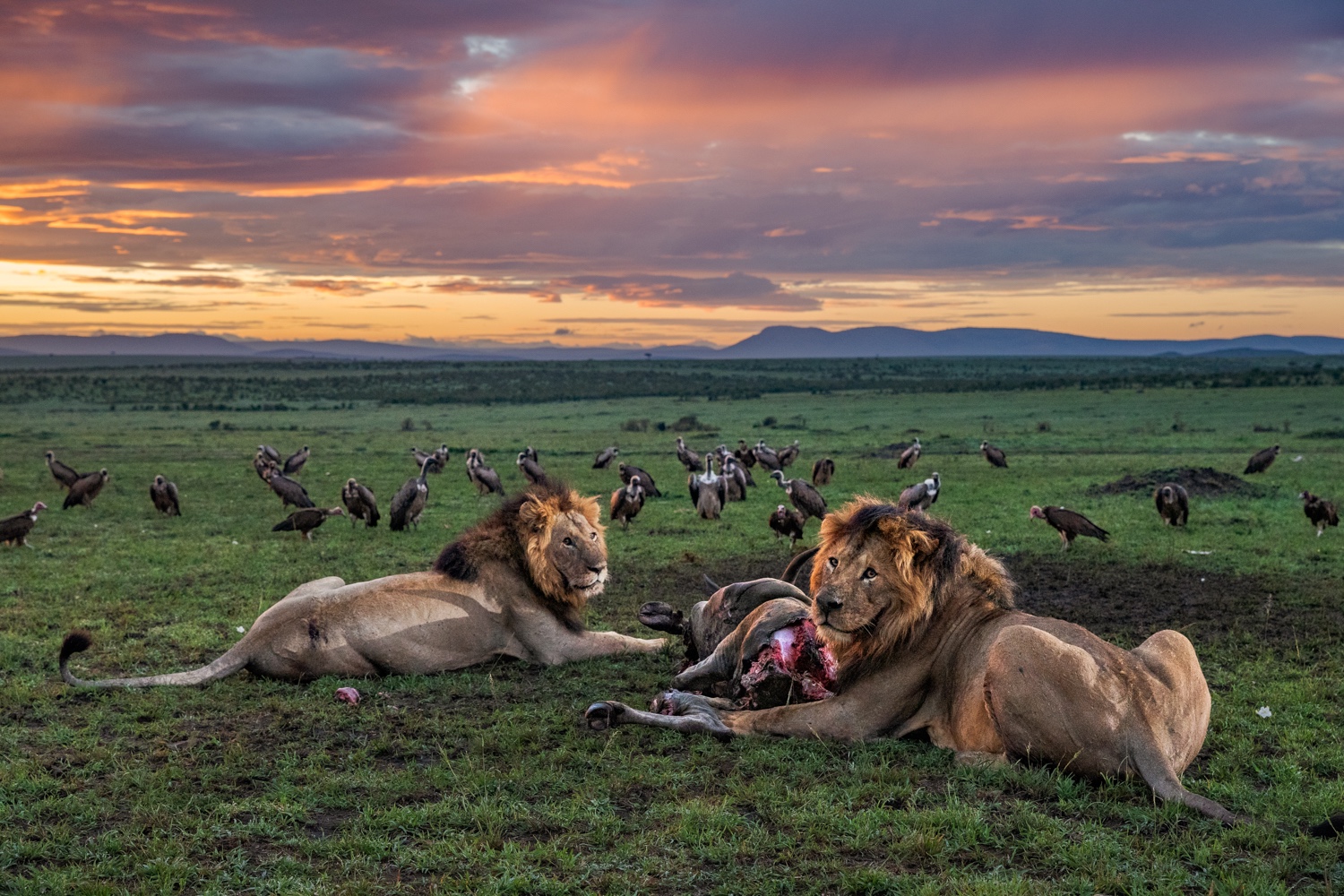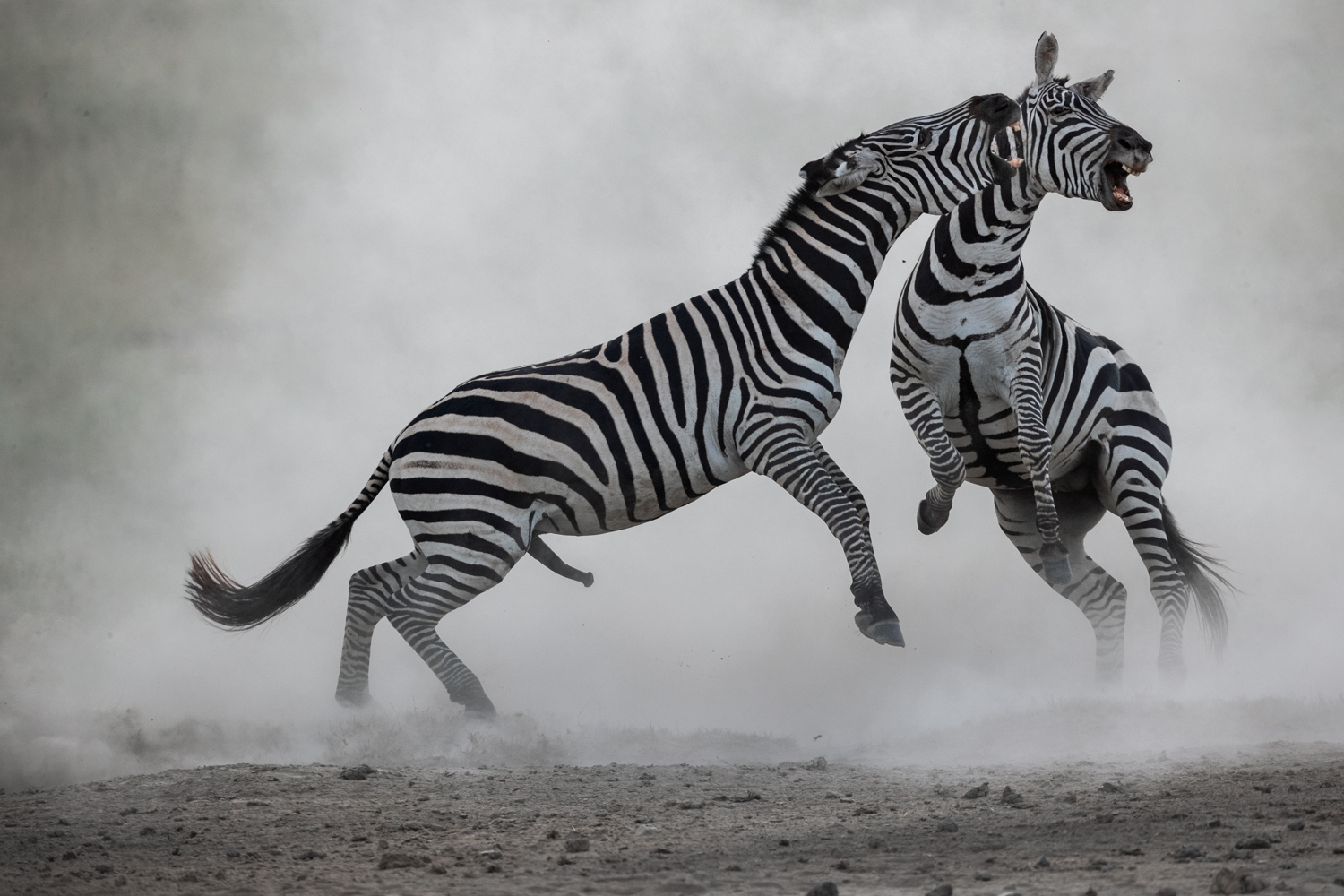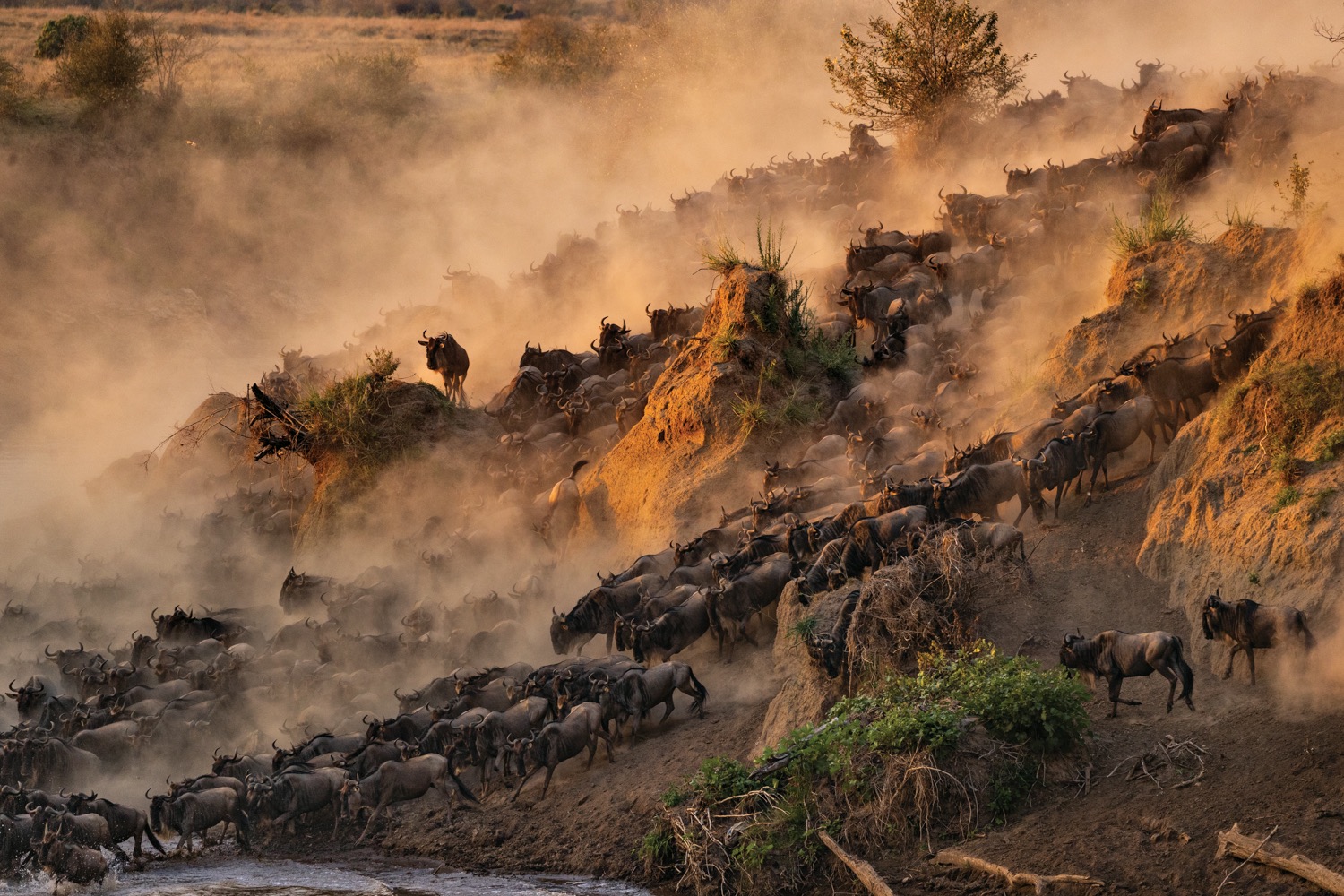



The ebb and flow of 1.3 million wildebeests and zebras as they chase seasonal rains across the Serengeti and Masai Mara is the largest and most impressive animal migration on Earth. But how does one approach a subject that has been photographed countless times — knowing there are dozens, if not hundreds, of stunning photographs already published? That was the challenge we put to photographer Charlie Hamilton James.
Accepting the challenge, he said, “I’ve been going back and forth to the Serengeti for decades and it’s never lost its wonder to me. There simply isn’t anywhere better on Earth to photograph wildlife.” But the Serengeti is so much more than just wildlife.
Tanzania’s population has gone from 8 million to 50 million in the last 50 years, and is set to double in the next 20 years. This means more people will be moving towards the edges of the Serengeti National Park. With them comes the pressures of cattle, poaching, and infrastructure. Charcoal production has already devastated the Mau Forest in the north of the Serengeti. Meanwhile, climate change is shifting the weather patterns which drive the migration — longer droughts, contrasted with heavier rains, are beginning to throw the system out of balance.
Artist Bios
-
Charlie Hamilton James
Charlie Hamilton James is a photojournalist who specializes in wildlife and conservation. His work requires specialized equipment, much of which he makes. Hamilton James has a particular interest in exposing “the brilliance of nature” in order to better document, understand, and save it. He has been obsessed with kingfishers — brightly plumed ambush hunters — since he was 6 years old, and with otters since he was 10. Before becoming a photographer for National Geographic, he had a long career in television working as a cameraman, series and executive producer, and presenter for the BBC’s prestigious Natural History Unit.
Organizations
-

National Geographic
Representing the largest brand on social media with over 780 million followers and 1.1 billion impressions each month, National Geographic Content’s award-winning and critically acclaimed storytelling inspires fans of all ages to connect with, explore, and care about the world through factual storytelling. National Geographic Content, part of a joint venture between The Walt Disney Company and the National Geographic Society, reaches over 532 million people worldwide in 172 countries and 33 languages as a digital, social, and print publisher and across the global National Geographic channels (National Geographic Channel, Nat Geo WILD, Nat Geo MUNDO), National Geographic Documentary Films, and direct-to-consumer platforms Disney+ and Hulu. Established in 1888, National Geographic is a trusted print and digital publication that creates visually stunning, richly reported photojournalism and distinguished, impartial coverage of the globe’s most pressing issues. Visit nationalgeographic.com and natgeotv.com or explore Instagram, Threads, Facebook, LinkedIn, YouTube, TikTok, and Reddit.
-

NYC Parks
NYC Parks is the steward of more than 30,000 acres of land — 14 percent of New York City — including more than 5,000 individual properties ranging from Coney Island Beach and Central Park to community gardens and Greenstreets. We operate more than 800 athletic fields and nearly 1,000 playgrounds, 1,800 basketball courts, 550 tennis courts, 65 public pools, 51 recreational facilities, 15 nature centers, 14 golf courses, and 14 miles of beaches. We care for 1,200 monuments and 23 historic house museums. We look after 600,000 street trees, and two million more in parks. We are New York City’s principal providers of recreational and athletic facilities and programs. We are home to free concerts, world-class sports events, and cultural festivals.
The urgent need to protect the Serengeti’s intricate web of life
Featuring: Charlie Hamilton James
Curated by: Kathy Moran Alexandra Moreo
Locations
View Location Details Washington Street and Prospect StreetWashington Street and Prospect Street
DUMBO, Brooklyn 11201
Location open 24 hours

